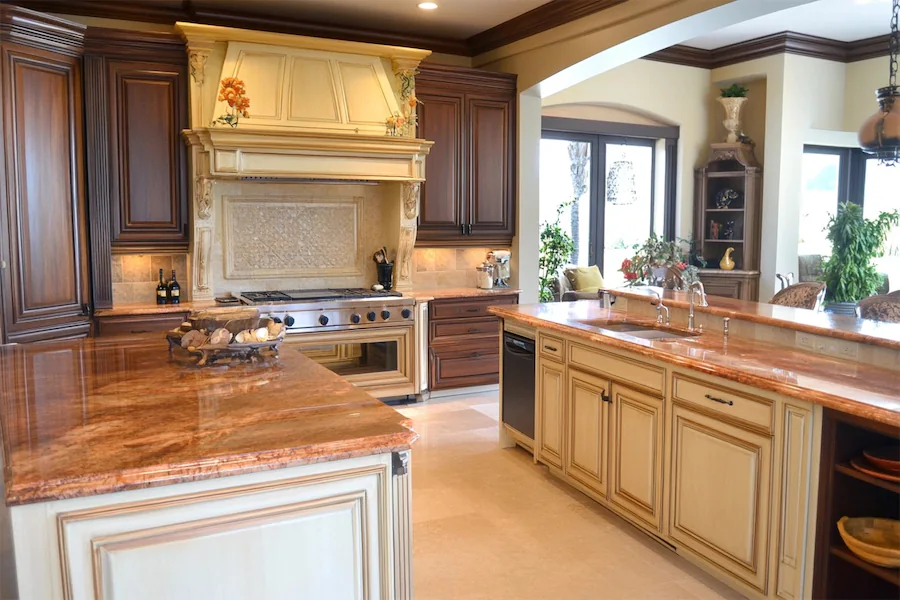Designing a dual-tone kitchen involves incorporating two distinct colors or finishes to create visual interest and depth. Here’s an overview to guide you through the key aspects of dual-tone kitchen design:
Introduction to Dual-Tone Kitchens
A dual-tone kitchen utilizes two contrasting or complementary colors within the cabinetry, walls, or other elements to enhance the space’s aesthetic appeal. This design approach adds dimension and can highlight specific areas, making the kitchen more dynamic and personalized.
Key Features of Dual-Tone Kitchens
- Contrasting Cabinetry: A common application involves painting upper and lower cabinets in different colors, such as white upper cabinets paired with navy blue lower cabinets, to create a balanced and eye-catching look.
- Accent Islands: Introducing a different color or finish on a kitchen island compared to the main cabinetry can serve as a focal point and add visual interest.
- Material Combinations: Mixing materials, such as wood and painted finishes, can add texture and depth to the design, enhancing the dual-tone effect.
Applications of Dual-Tone Kitchen Design
- Upper and Lower Cabinetry: Applying lighter colors to upper cabinets and darker shades to lower ones can make the space feel more open while grounding the design.
- Feature Walls or Backsplashes: Incorporating a different color or material on a backsplash or feature wall can complement the dual-tone cabinetry and add cohesion to the design.
- Open Shelving Accents: Using a contrasting color for open shelves against a neutral background can create a striking visual effect and showcase decorative items effectively.
Considerations When Designing a Dual-Tone Kitchen
- Color Harmony: Ensure the chosen colors complement each other and align with the overall aesthetic of the home to maintain visual harmony.
- Proportion and Balance: Distribute colors thoughtfully to achieve balance; for instance, using a bolder color on lower cabinets and a neutral tone on upper cabinets can prevent the design from feeling top-heavy.
- Trends and Timelessness: While dual-tone kitchens are currently popular, consider the longevity of color choices to ensure the design remains appealing over time.
Conclusion
A dual-tone kitchen design offers a stylish and personalized approach to modern kitchen aesthetics. By thoughtfully selecting complementary colors and balancing their application, homeowners can create a space that is both functional and visually engaging.
